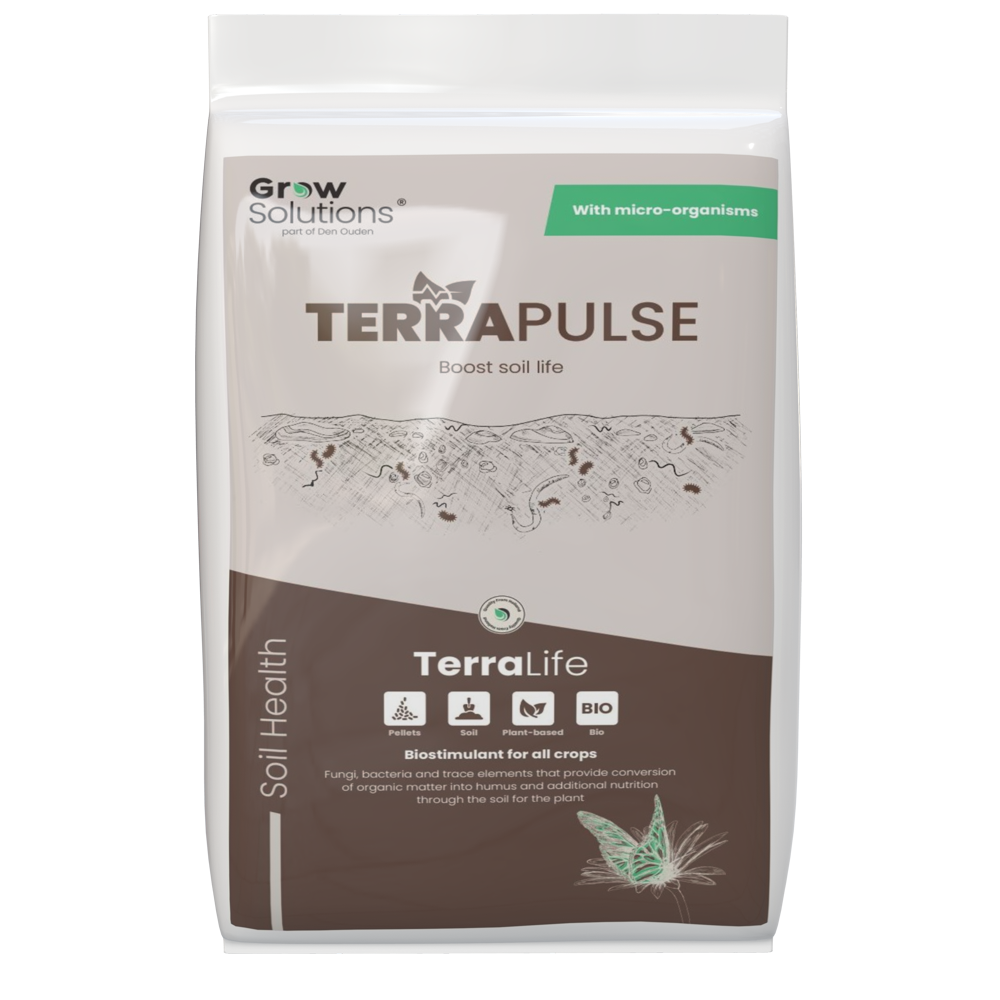Ingredients and Fertilizers
Ingredients |
|---|
Soil-improver, formerly known as TerraPulse
Fungi, bacteria and trace elements that provide conversion of organic matter into humus and additional nutrition through the soil for the plant.
Learn more
Restores soil life by adding microorganisms Read more
>By adding fermented grape must, this product restores the soil life cycle by adding microorganisms. The bacteria, fungi and streptomycetes in the fermented grape play a crucial role in breaking down organic matter and converting it to stable humus in the soil (humification). This product is exceptionally rich in energy in the form of simple carbons, resulting in a boost to the native soil life present.Read Less
Creates better soil structure by converting organic matter into humus. Read more
>The microorganisms in this product convert organic matter into humus, leading to improved soil structure. Humus provides several benefits to the soil. It improves water retention and promotes optimal aeration in the soil. In addition, humus stimulates beneficial microbial activity, allowing for even better conversion of the organic matter added to the soil.Read Less
By converting organic matter into humus (humification) nutrients become available for the plant. Read more
>During the humification process, nutrients become available for the plant. The conversion of organic matter to humus in the soil ensures that essential nutrients become available to the plant in an accessible manner. This process contributes to an enriched soil that provides favorable conditions for plant growth and development, thus better meeting the nutritional needs of crops. The nutrients released during humification contribute to healthy and productive plant life.Read Less
Discover TerraBoost: an effective soil improver for all crops grown in soil. Restores soil life using micro-organisms, improves soil structure by converting organic matter into the stable form humus, and makes nutrients available to plants. Optimize soil with TerraBoost, for a pragmatic approach to sustainable plant growth and promoting healthy crops.
Product suitable for use in organic farming in accordance with (EU) 2018/848, (EU) 2021/1165, NOP Regulation, Skal, Demeter, KRAV and BIO-AUSTRIA Standards.
Recommended quantities between 300 - 600 kg per acre. Look for specific cultivation advice on the website
Details1 year minimum, must be stored in a dry, frost-free place, away from direct sunlight
We pride ourselves on offering evidence-based solutions to growers worldwide. Every claim we make about the effectiveness of our products is backed by extensive research and field reports.
More abous usWe pride ourselves on offering evidence-based solutions to growers worldwide. Every claim we make about the effectiveness of our products is backed by extensive research and field reports.
More abous us
Ingredients |
|---|
Ingredients |
|---|
Fertilizers |
|---|
With these products you get even more results and yield from your cultivation.

I'm Paul, Sales support within the GrowSolutions team. You can contact me for the Asia, Stan countries, East and West Africa and Algeria regions.
- Paul den Ouden
Other solutions that work for different cultivation techniques.

Restores soil life

Expands root zone

Supports protection of root zone